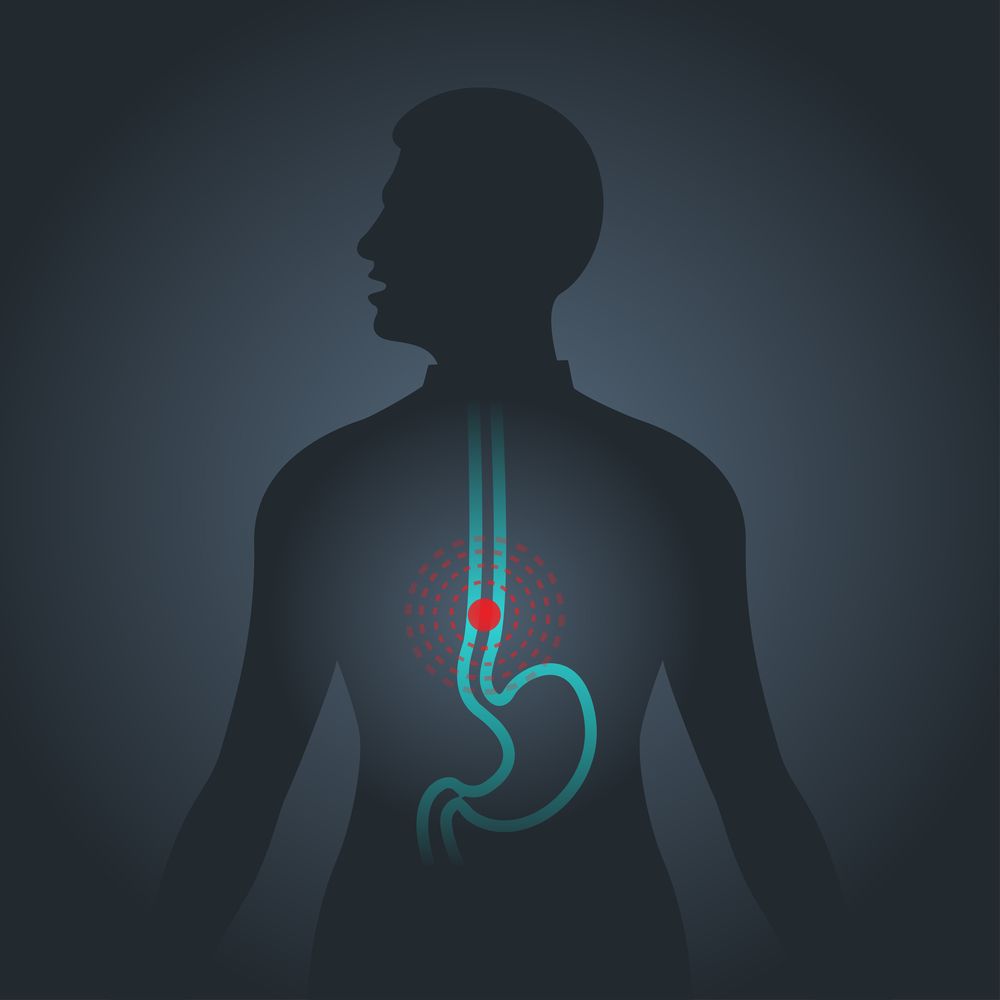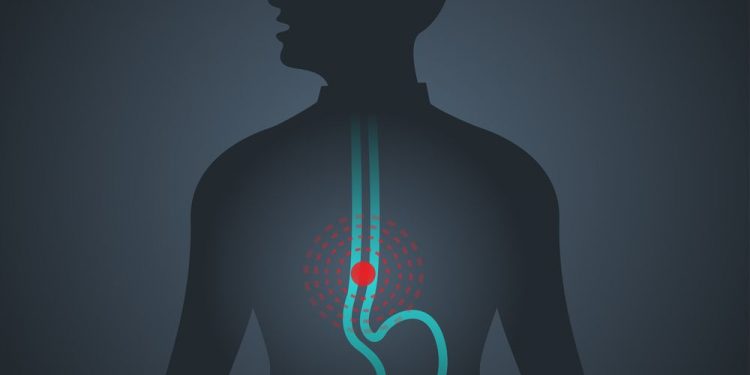Eosinophilic esophagitis (EoE) is an immune-mediated disease characterized by esophageal inflammation involving a clonal population of eosinophils. Although reflux esophagitis is a primary risk factor for esophageal adenocarcinoma, epidemiological data indicate that patients with EoE do not develop cancer. This is thought to be because the inflammation from EoE tends to produce a fibrostenotic phenotype rather than a malignant one, and because many of the same symptoms seen in patients with EoE can be produced by non-cancerous processes such as peptic strictures or esophageal narrowing.
The symptoms of EoE include a burning or scratchy sensation when swallowing, difficulty eating due to food being stuck in the esophagus, and throat mucus that appears thickened. The diagnosis of EoE is based on history, endoscopic and radiographic findings, and the exclusion of secondary causes of esophageal inflammation. Typical patient demographic characteristics are younger age, male gender, and a prior history of atopic disorders (asthma, eczema, allergic rhinitis).
Patients with EoE often have a significant history of acid suppression therapy to treat gastroesophageal reflux disease (GERD). While this treatment improves the symptoms of EoE, it does not affect the inflammation that is characteristic of the disease and can cause peptic ulcers, esophageal strictures, and Barrett’s esophagus. Mucosal biopsies typically demonstrate increased eosinophil counts, but they may miss muscular or serosal involvement, and radiography can miss subtle signs such as multiple mucosal rings or strictures.

Dietary approaches to reduce inflammation in EoE are typically aimed at eliminating foods that trigger the allergic reaction. This is usually done through a “targeted” approach where foods are eliminated one at a time until the symptoms disappear, or a more generalized elimination diet in which all foods are temporarily avoided to help identify which ones are the problem. This process can be very difficult, and it is not always successful.
In addition to dietary interventions, a number of medications have been used in an attempt to reduce inflammation in patients with EoE. The most recently approved medication for this purpose is a monoclonal antibody called dupilumab (Dupixent). This drug inhibits an enzyme that promotes inflammation and has been shown to improve symptom relief in some patients.
To investigate the association between eosinophilic inflammation and esophageal adenocarcinoma, we reviewed the pathology archives of three different medical centers to identify cases of esophageal adenocarcinoma in which the patients had a diagnosis of eosinophilic esophagitis. Each case was then independently evaluated by a gastrointestinal pathologist for esophageal adenocarcinoma. A histologic analysis of the lesion, surrounding stroma, and overlying epithelium was also performed. The pathologists recorded typical histologic features including necrosis, spindling, nuclear pleomorphism, and increased mitotic activity at 400x magnification. In addition, the tumors were scored for adequacy of the invasiveness, grade of adenocarcinoma, and presence of esophageal squamous cell carcinoma. Our results are similar to those of previous studies and support the hypothesis that a nexus exists between eosinophilic inflammation, EoE, and esophageal adenocarcinoma. However, these results should be interpreted with caution as our study was a retrospective chart review and did not control for other possible confounders.









